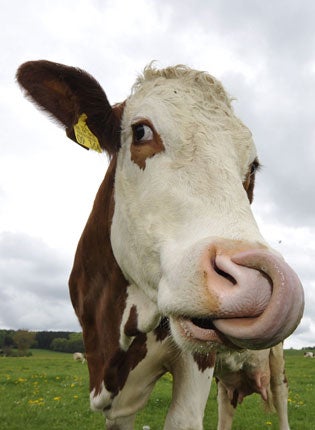US is pumping 50% more methane into atmosphere than government says, scientists warn
New figures effectively cancel out perceived benefits of switch from coal to natural gas

Your support helps us to tell the story
From reproductive rights to climate change to Big Tech, The Independent is on the ground when the story is developing. Whether it's investigating the financials of Elon Musk's pro-Trump PAC or producing our latest documentary, 'The A Word', which shines a light on the American women fighting for reproductive rights, we know how important it is to parse out the facts from the messaging.
At such a critical moment in US history, we need reporters on the ground. Your donation allows us to keep sending journalists to speak to both sides of the story.
The Independent is trusted by Americans across the entire political spectrum. And unlike many other quality news outlets, we choose not to lock Americans out of our reporting and analysis with paywalls. We believe quality journalism should be available to everyone, paid for by those who can afford it.
Your support makes all the difference.Scientists have warned that the US is pumping out 50 per cent more methane than it publishes in government estimates, effectively cancelling out efforts to cut CO2 emissions.
The study is one of the most comprehensive attempts to monitor greenhouse gases ever carried out, based on more than 13,000 measurements between 2007 and 2008.
It estimates that the US poured nearly 50 million tons of methane into the air during the period – compared to the 32 million tons estimated by the US Environmental Protection Administration (EPA), or the 29 million tons registered by the European Commission.
The gas is 21 times more effective at trapping heat in the atmosphere than CO2, and scientists said the new figures meant methane contributed as much to global warming as all the emissions from the US’s cars, trucks and planes in a six-month period.
“Something is very much off in the inventories,” said study co-author Anna Michalak, an Earth scientist at the Carnegie Institution for Science in Stanford, California. “The total US impact on the world's energy budget is different than we thought, and it's worse.”
Unlike previous studies, which estimate methane emissions at source – outside livestock farms, oil refineries and fracking operations – the new research measured the gas once it had reached altitude, with sensors on planes and tall towers.
Scientists published their findings in the Proceedings of the National Academy of Science.
Outside experts praised the study, with Robert Howarth at Cornell University calling it “very compelling and quite important. This is the most comprehensive study yet.”
Britton Stephens of the National Centre for Atmospheric Research in Boulder, Colorado, said: “The atmosphere is this great integrator that records the sum of all emissions. The great thing about it is it doesn't lie, it doesn't make mistakes.”
Stephens added that methane leaks may have cancelled out the benefits felt from recent pushes to switch from coal to natural gas.
Michalak said their methods meant it is hard to say what is putting more methane into the air. But she said by looking at concentrations — especially within Texas, Oklahoma and Kansas — the scientists have a good idea: Cows, oil and gas.
Nearly one-quarter of the US methane emissions came from those three states, and the measurements were nearly 300 per cent higher than government estimates. Texas is known for its refineries and oil and gas drilling. Oklahoma is another major driller, while Kansas hosts some of the country’s largest livestock farms.
Cows seem to be spewing twice the methane that scientists previously thought, Michalak said.
While burps and flatulence are part of the methane emission from cattle, University of California Santa Barbara professor Ira Leifer said a bigger factor is manure.
“If you shovel it into an artificial lagoon you are creating the perfect production for methane, but it cuts down on the smell and your neighbours complain less,” he said.
A spokesperson for the government's EPA Alisha Johnson said her agency hasn't had time to go through the study yet, but hopes it will help “refine our estimates going forward”.
Join our commenting forum
Join thought-provoking conversations, follow other Independent readers and see their replies
Comments